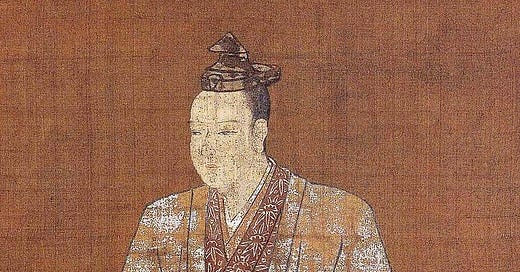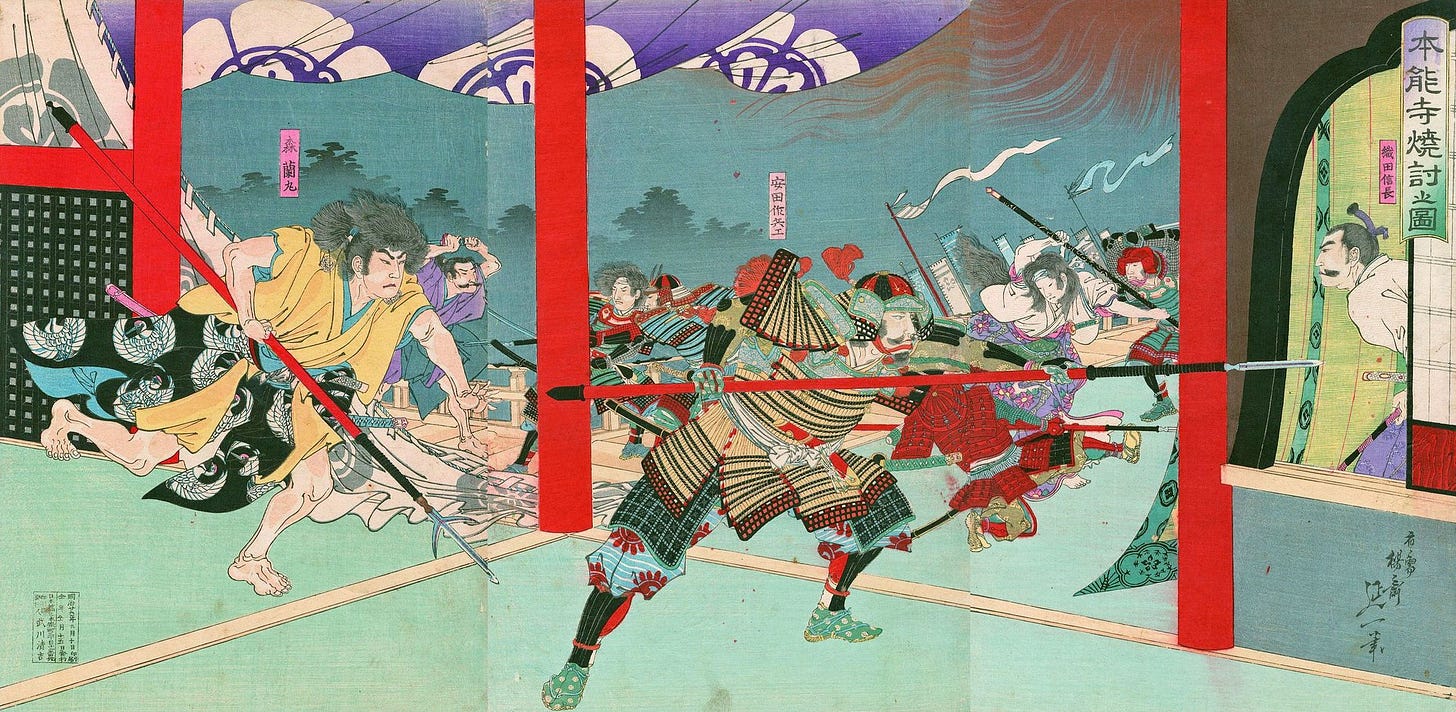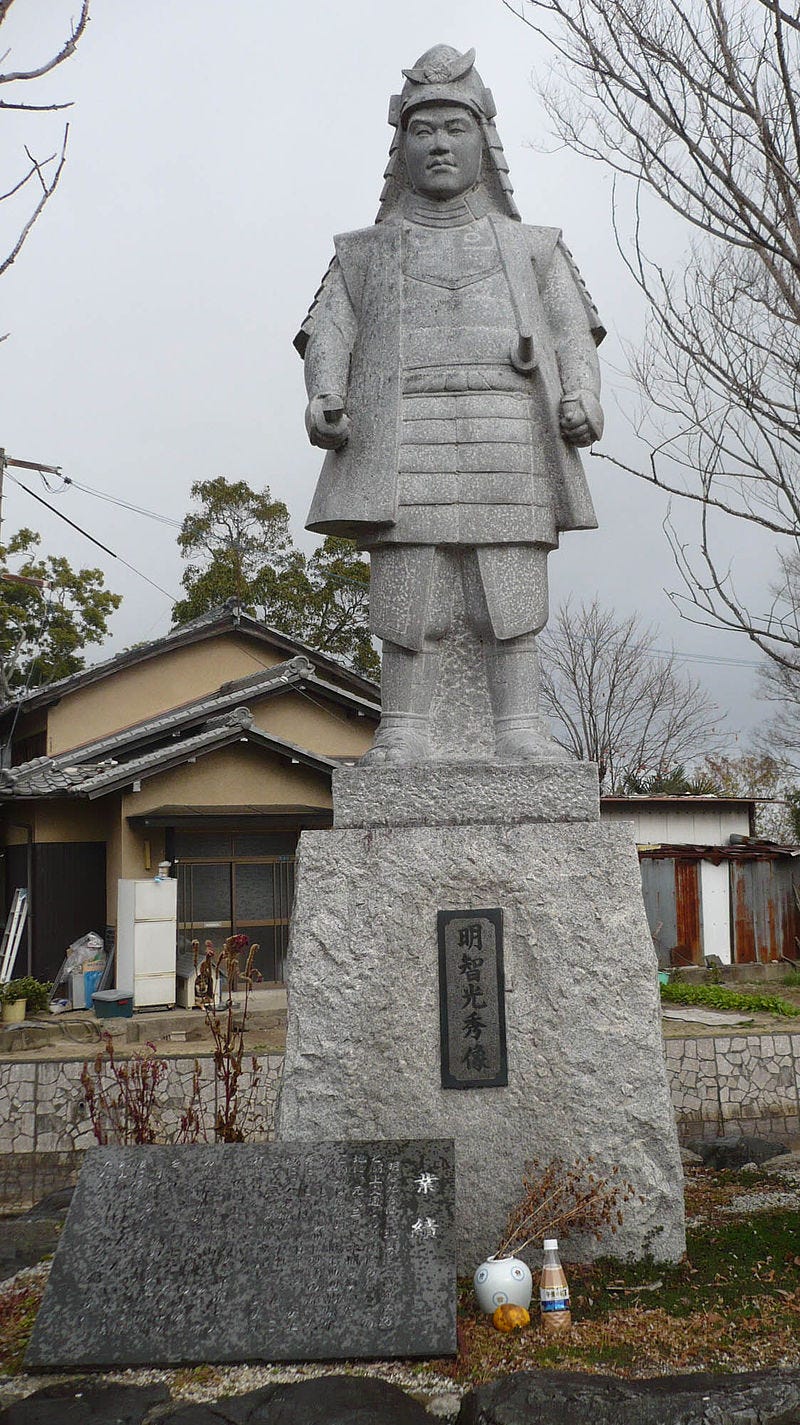Nicknamed the Jusan Kubo, or “Thirteen Day Ruler”, Akechi Mitsuhide was killed following the Battle of Yamazaki July 2, 1582.
Akechi Mitsuhide is best remembered as the traitor responsible for the death of Oda Nobunaga.
Mitsuhide was born possibly in Kani, most probably Ena in Mino Province (Gifu Prefecture) where there are fortresses named Akechi Castle. Mitsuhide was originally in the employ of the Saito clan of Mino. He was an expert in firearms, and came into the service of Oda Nobunaga following Nobunaga’s conquest of Mino in 1566.
Nobunaga rarely placed much trust in his followers, however he highly valued Shibata Katsuie, Toyotomi Hideyoshi and Akechi Mitsuhide. Mitsuhide in particular was a close advisor, and much trusted by Nobunaga.
Mitsuhide was the first of these samurai to be awarded a castle, Sakamoto, built on the south western banks of the mighty Lake Biwa in Omi (Shiga Prefecture). Nobunaga later awarded him Kameyama in Tamba. Despite his advances and loyal service, Nobunaga appears to have treated the man severely, reprimanding and publicly humiliating the samurai in front of his peers, and even foreign travelers of the day who recorded such insults in their journals. This mistreatment has been forwarded as one of the reasons for his treachery, but mostly repudiated by researchers.
Another reason which has also since been debunked is the Hatano incident. Mitsuhide was ordered to attack the Hatano of Tamba Province. In an attempt to control the situation without bloodshed, he offered the Hatano a chance to surrender to Nobunaga and join forces. Mitsuhide took the Hatano Lord’s mother and family as a goodwill gesture to Nobunaga, who promptly had the old lady and family members executed. Some time later, the retainers of the Hatano found Mitsuhide’s mother and had her killed in revenge. This had long been suspected as the prime reason that would serve to turn Mitsuhide against his master, however this has been proven to be incorrect, and an Edo period fiction.
Another, more plausible reason is that Mitsuhide was friends with the Chosokabe clan who ruled much of Shikoku. Recently discovered letters point to the fact that the Chosokabe were aware Nobunaga was looking to oust them from their lands, and it is possible Mitsuhide may have acted to maintain his friend’s properties.
Yet another theory gaining attention is regarding Nobunaga’s growing power. It appears he was considering overthrowing the imperial court on his quest for ultimate power. Privy to the plan, and to save the Emperor, Mitsuhide turned.
Either way, his chance came five years later. On June 21, 1582, Mitsuhide was supposed to have assisted Hideyoshi in his prolonged attack on the Mori clan in the western most provinces of Honshu. Instead, Mistuhide directed his 13,000 samurai to the Honno-ji, a temple in Kyoto where Nobunaga was billeted with just a handful of bodyguards. Mitsuhide’s troops surrounded the Honno-ji, and in the melee, Nobunaga was wounded. The Great General retired into the burning temple where he is believed to have committed seppuku amongst the flames. Although Mitsuhide did not personally kill Nobunaga, and was some 20 kilometers away in Sakai near Osaka at the time, he claimed responsibility.
The betrayal shocked the nation. Mitsuhide then claimed the title of Shogun based on his ancestry. Mitsuhide had expected little adversary to his coup, as he believed Hideyoshi was preoccupied with the attack on the Mori. Hideyoshi, however, quickly and peacefully resolved the situation with the Mori, and was able to relocate his army within four days to Yamazaki catching Mitsuhide by surprise. Two hours after engaging, the traitor’s army was routed. Mitsunari fled, hoping to reach the safety of Sakamoto Castle. He never made it.
While escaping from the ruinous Battle of Yamazaki, Mitsuhide was killed by a group of peasants wielding bamboo staves. He was 54 years old, and had been self proclaimed Shogun for all of thirteen days.






